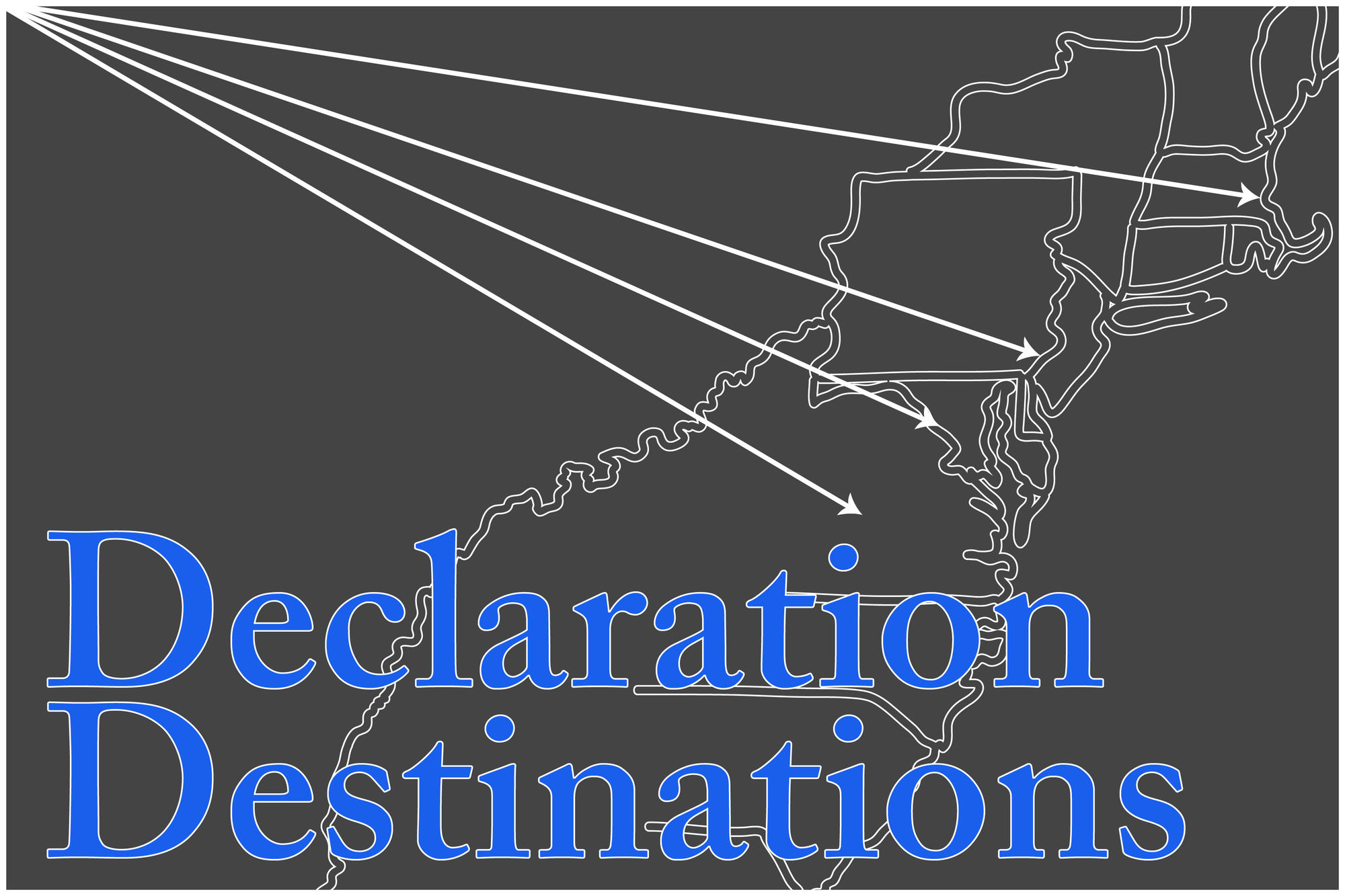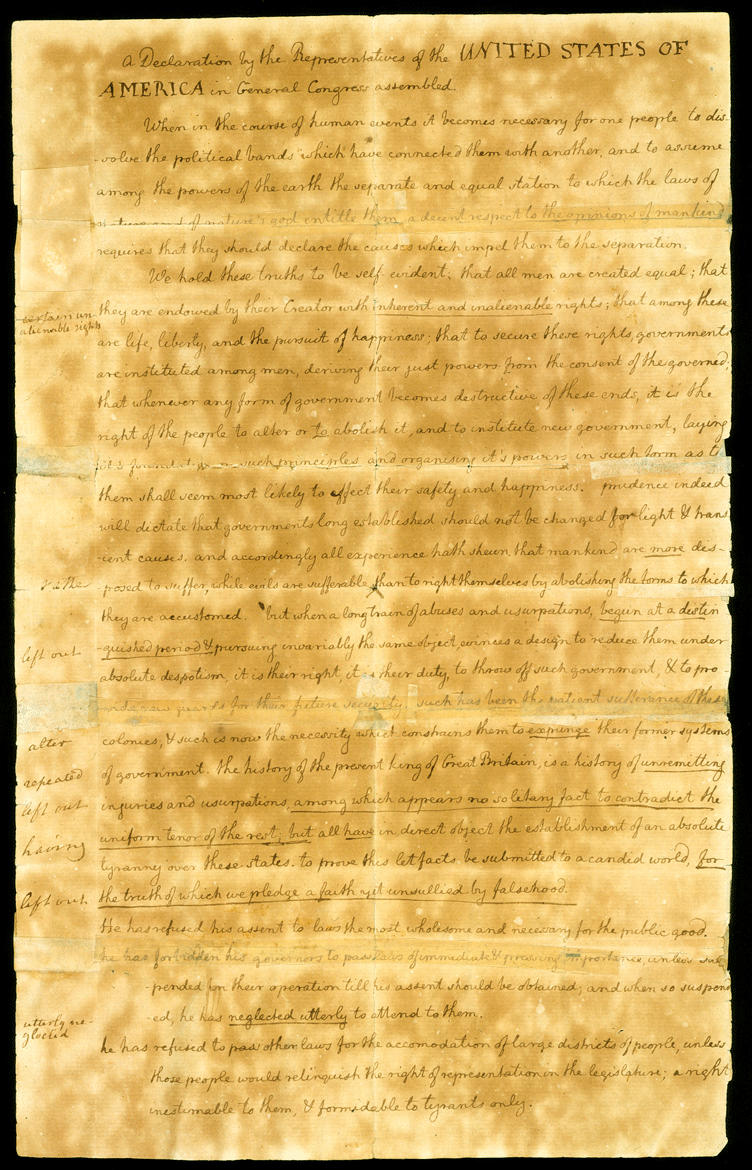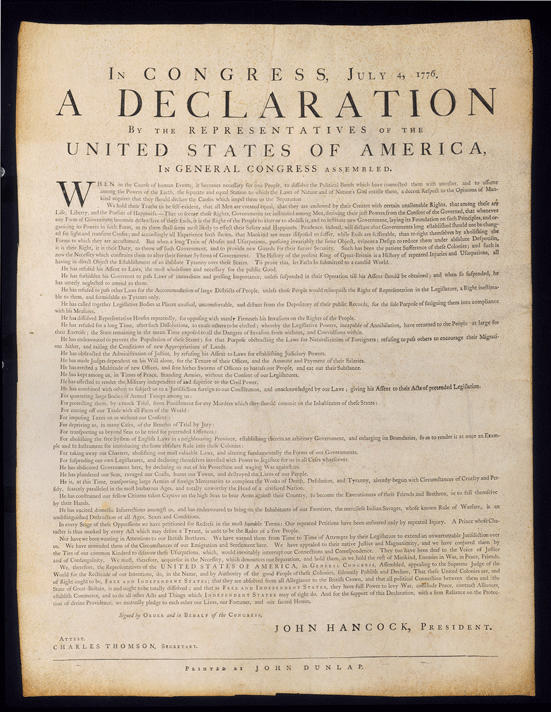 In May 1743, Benjamin Franklin issued “A Proposal for Promoting Useful Knowledge among the British Plantations in America.” Franklin and others founded the American Philosophical Society in Philadelphia for this purpose, and today, it is the oldest learned society in the United States. Franklin was the first President of the American Philosophical Society, succeeded by astronomer and first director of the United State Mint, David Rittenhouse. After Rittenhouse’s death, Thomas Jefferson became President of the APS, and remained President through both of his terms as President of the United States, serving from 1797 through 1814. Members of the American Philosophical Society meet biannually in Philadelphia, and the APS has an active library and museum.
In May 1743, Benjamin Franklin issued “A Proposal for Promoting Useful Knowledge among the British Plantations in America.” Franklin and others founded the American Philosophical Society in Philadelphia for this purpose, and today, it is the oldest learned society in the United States. Franklin was the first President of the American Philosophical Society, succeeded by astronomer and first director of the United State Mint, David Rittenhouse. After Rittenhouse’s death, Thomas Jefferson became President of the APS, and remained President through both of his terms as President of the United States, serving from 1797 through 1814. Members of the American Philosophical Society meet biannually in Philadelphia, and the APS has an active library and museum.

Image Credit: Flickr
Philosophical Hall, the home of the APS since the 1780s, is located in the same block as Independence Hall, on the east side of what was then the State House yard and is now Independence Square. Just after Philosophical Hall was built, the Library Company of Philadelphia (also founded by Ben Franklin) built its headquarters, right across Fifth Street from the APS. The original building was demolished, but a modern recreation on the same spot is now the home of the APS Library.

Image Credit: Flickr
Of the fifty-six signers of the Declaration of Independence, fourteen became members of the American Philosophical Society in their lifetime: John Adams, George Clymer, Benjamin Franklin, Thomas Heyward, Jr., Stephen Hopkins, Francis Hopkinson, Samuel Huntington, Francis Lightfoot Lee, Thomas McKean, Robert Morris, Benjamin Rush, Richard Stockton, James Wilson, and John Witherspoon. Timothy Matlack, the likely scribe of the Declaration of Independence, was also a member, as were George Washington, Alexander Hamilton, James Madison, Thomas Paine, and the Marquis de Lafayette.
In 2018, the American Philosophical Society will celebrate its 275th anniversary with a special museum exhibition, In Franklin’s Footsteps: 275 Years at the American Philosophical Society (April 13-December 30, 2018).
The Declaration
The APS Library holds four notable copies of the Declaration of Independence: one of Jefferson’s “fair copies,” a July 6th issue of The Pennsylvania Evening Post, a Dunlap broadside, and a unique Dunlap printing on vellum.


Manuscript “fair copy” and Dunlap broadside on vellum, APS Library
Thomas Jefferson produced several handwritten “fair copies” of the draft of the Declaration of Independence that the Committee of Five presented to the Continental Congress on June 28, 1776. He distributed these copies to friends, including Richard Henry Lee, who had proposed independence in June but returned to Virginia before the debates leading up to July 4th. In the margins of this manuscript, Lee’s brother Arthur noted passages that were changed in the final version. In 1825, Lee’s grandson, Richard Henry Lee, Jr., donated the manuscript to the APS. The text is handwritten on the front and back of two leaves, and after years of sun exposure (including many spent in a frame in the window of Philosophical Hall, so that the document could be seen by the public), the handwriting has faded. Thanks to conservation work, the manuscript can be safely displayed from time to time, and was featured in the APS Museum’s 2014 exhibition.
The APS Library is home to two of the first printings of the Declaration of Independence: the Dunlap broadside (July 4-5) and The Pennsylvania Evening Post (July 6). The broadside was acquired in 1901 through an exchange with the Library of Congress. But, the APS Library is also home to a completely unique Dunlap broadside. Some time after July 4, John Dunlap reset the text of the Declaration of Independence and printed a broadside on vellum. This copy was apparently acquired by David Rittenhouse, and was donated to the APS in 1828 by James Mease.
Other Things to See
- The APS Library has a number of important rare books and manuscripts associated with the signers of the Declaration of Independence, including a presentation copy of Thomas Jefferson’s Notes on the States of Virginia and a large percentage of the papers of Benjamin Franklin.
- Among Franklin’s papers is a letter from Jefferson to Franklin which likely accompanied a draft of the Declaration in June 1776, and Franklin’s annotated copy of the first printing of the United States Constitution.
- The APS Museum has a revolving Windsor chair and polygraph owned by Jefferson, as well as Thomas Sully’s portrait of Jefferson in old age and Charles Willson Peale’s 1772 portrait of Franklin, among numerous other portraits, busts, and scientific instruments connected to both men.
Plan Your Visit
- Location: 104 South Fifth Street (Museum) and 105 South Fifth Street (Library), Philadelphia, PA
- APS Library Hours: Reading Room open Mondays-Fridays, 9:00 am - 4:30 pm
- APS Museum Hours: Thursdays-Sundays, 10:00 am - 4:00 pm (mid-April through December); extended hours from Memorial Day through Labor Day, 10:00 am - 5:00 pm
- Check the website for more information about the APS Library Reading Room, exhibitions, and special events.
https://www.amphilsoc.org
Twitter: @AmPhilSociety
Instagram: @AmPhilSociety
